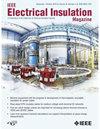Stories from China
IF 1.3
4区 工程技术
Q2 ENGINEERING, ELECTRICAL & ELECTRONIC
引用次数: 0
Abstract
Aluminum electrolytic capacitors (AEC), with their notable advantages of having a low cost and high capacitance, have widespread application in numerous fields such as power circuits, signal processing circuits, automotive electronics, and industrial control [1]–[4]. However, because of the low conductivity and poor temperature and humidity stability of traditional cathode materials, AEC face significant challenges in achieving breakthroughs in performance, such as high-frequency response (>30 kHz), high-temperature resistance (>150°C), and high-humidity tolerance (>90% relative humidity [RH]) [1]. These limitations severely restrict their potential applications in fields such as new energy vehicles, rail transportation, aerospace, and marine engineering (Figure 1).来自中国的故事
铝电解电容器(AEC)以其低成本、高电容的显著优势,在电力电路、信号处理电路、汽车电子、工业控制等众多领域得到了广泛的应用。然而,由于传统正极材料电导率低、温湿度稳定性差,AEC在实现高频响应(>30 kHz)、耐高温(>150℃)、高湿耐受性(>90%相对湿度[RH])[1]等性能突破方面面临重大挑战。这些限制严重限制了它们在新能源汽车、轨道交通、航空航天和海洋工程等领域的潜在应用(图1)。
本文章由计算机程序翻译,如有差异,请以英文原文为准。
求助全文
约1分钟内获得全文
求助全文
来源期刊

IEEE Electrical Insulation Magazine
工程技术-工程:电子与电气
CiteScore
4.60
自引率
3.40%
发文量
121
审稿时长
>12 weeks
期刊介绍:
The EI Magazine publishes articles written by authors from industry, research institutes and academia. The articles are more practical in content than the papers published in the Transactions. Usually three articles are published in each issue. The articles deal with dielectric materials, processes and new developments applied to industry products. Also the EI Magazine is used to promote upcoming conferences and solicits papers for the conferences. In addition, reports on past conferences are given in many issues. Book reviews and news items are included. An editorial is written by both the EIC and the President of DEIS in alternate issues. Advertising of insulation products appears in many issues.
 求助内容:
求助内容: 应助结果提醒方式:
应助结果提醒方式:


